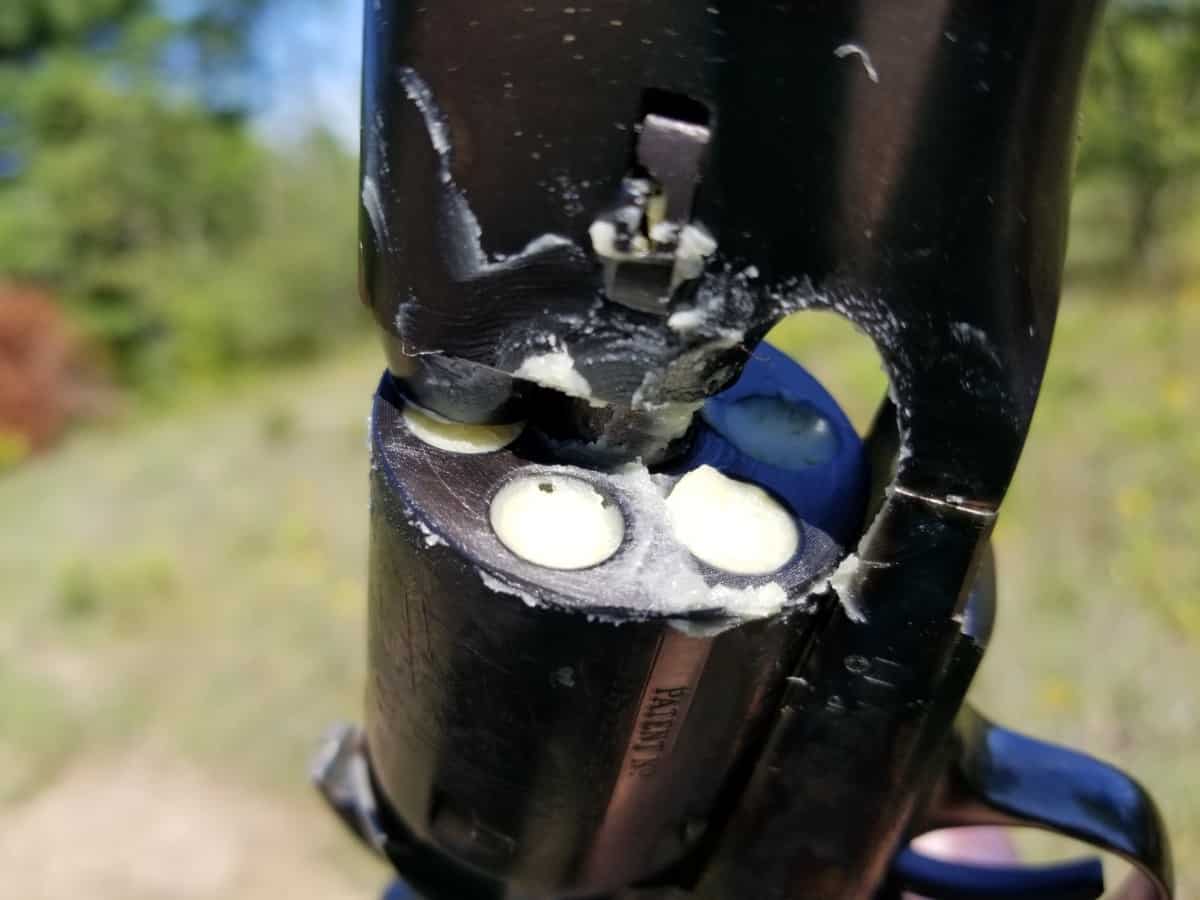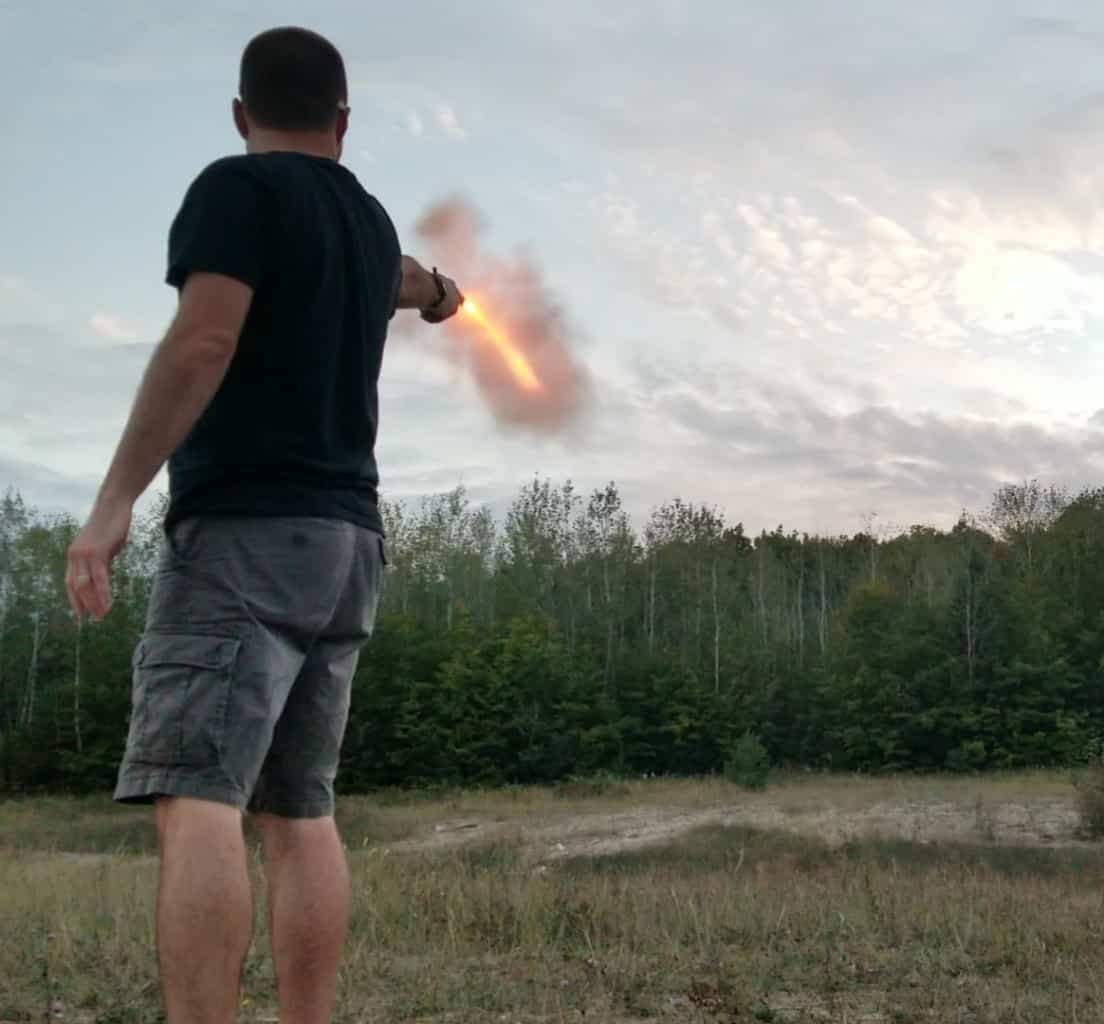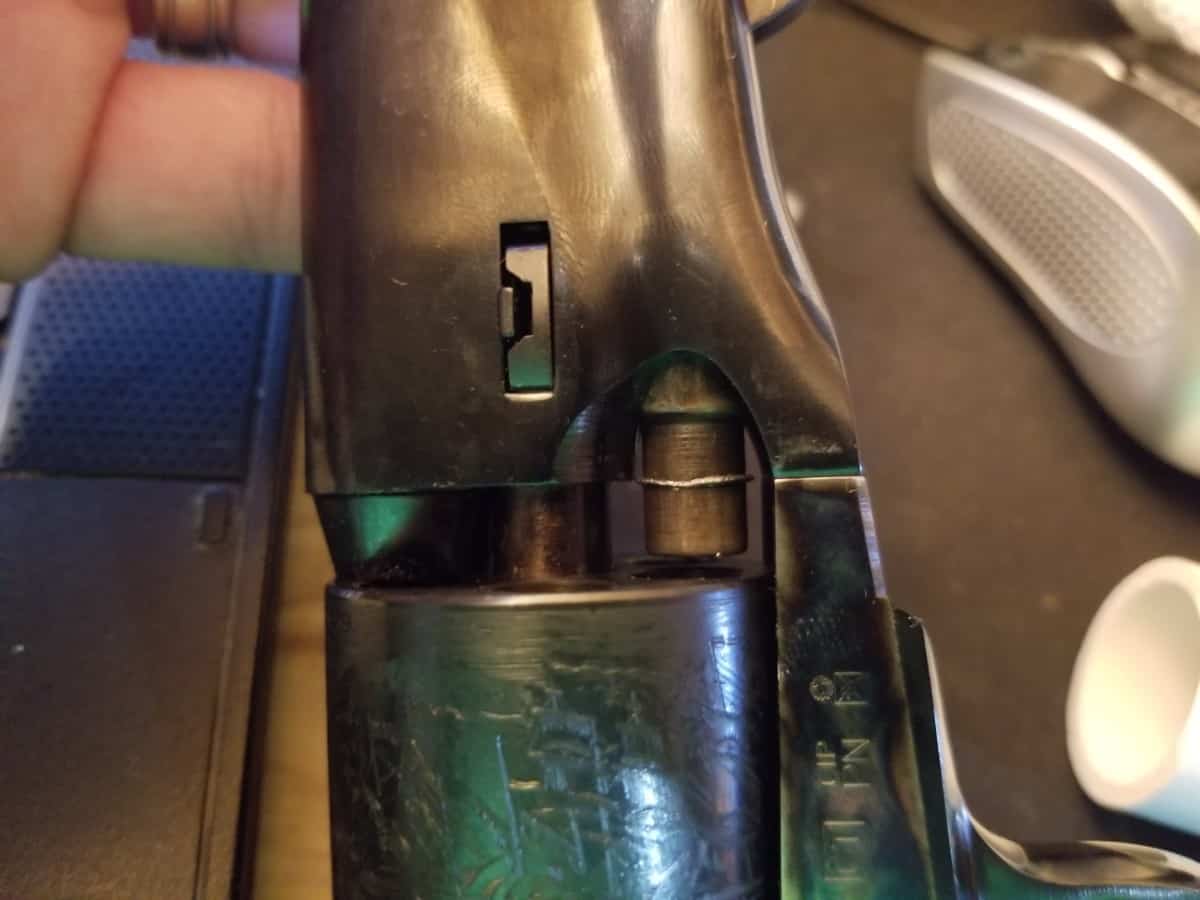If you’ve been around black powder sports for any length of time, you will hear talk about how you should never bring a black powder firearm out into the freezing cold for an extended period of time and then bring them back into a warm environment, like your house.
The logic is that when metal gets cold — especially at freezing temps — that it will begin to condensate immediately when brought indoors like a dripping can of cold soda on a warm summer day.
This is a problem when we consider that in each of the chambers of the cylinder, there is compressed black powder that is very sensitive to getting wet and will be rendered inert with the condensation within the cylinder.
It’s not bad advice, but I wanted to put it to the test to see just how sensitive the powder within the cylinder would be when exposed to freezing temps followed by a hot and humid environment.
Keep reading to see my experiment and you might be surprised like I was!
Experiment to Test Black Powder Revolver Performance After Being Exposed to Freezing Temps
Items used in the Experiment:
I conducted this experiment with a 36 caliber 1861 Colt Navy. I used 20 grains of FFF Goex® black powder (not Pyrodex®), a lubed wad that is 100% wool, and was impregnated with a 1:1 ratio of beeswax and olive oil. The round ball was pure, soft lead that was 0.380″ in diameter and cut a good ring upon loading for a proper seal. I also greased the end of the cylinder.

The nipples used were aftermarket SliXshot nipples that are more cylindrical than the stock nipples which were more conical. Remington #10 caps were used as well. The nipples were not treated with beeswax for waterproofing purposes like I did on one of my previous articles.
This experiment was conducted in July of 2020, the weather was sunny and the temperature was around 90 degrees and humid.
How Experiment was Conducted:
I started by fully loading the first cylinder (powder, wad, round ball, and cap). I then removed the cylinder from the revolver and placed it in the freezer for 60 minutes on top of the ice in my freezer’s ice box.
Once 60 minutes had passed, I removed the cylinder and brought it into my uninsulated garage which was just over 90 degrees, and let it sit for 60 minutes.
Immediately the cylinder would appear to be perspiring with condensation like that cold beer can on a hot summer day. I wasn’t having high hopes for the powder inside.
After warming for 60 minutes, the cylinder no longer felt cold to the touch and felt just like any other metallic object in my garage.
To not contaminate the next load with condensation, I wiped out the inside of the next chamber to be loaded with a cotton patch and a ballpoint pen.
I proceeded to load the next chamber the same way as the first and then place it in the freezer and garage after their allotted times.
I continued with this procedure until all chambers had been loaded and the last chamber had been frozen and thawed once, whereas the 1st chamber had been frozen and thawed 6 times.
Results of the Freezing and Thawing Experiment with a Black Powder Revolver
I honestly didn’t have high hopes for the first 4 chambers that were loaded. There was simply too much moisture on the outside of the cylinder, and I was convinced that even if the powder remained stable, that the caps would be compromised. I learned how sensitive they are to moisture from my attempts to waterproof a black powder revolver.
Taking the Colt Navy to some state property with a gravel pit, I set up my camera and expected duds.
I lined up the cylinder to have the first chamber fire first. Pulling the hammer back, I aimed at a small piece of wood in the distance and squeezed the trigger.
Bang!

To my surprise, it fired and didn’t even sound muffled, as if the powder was at least partially compromised.
I repeated the process 5 more times, and each hammer fell on an intact load that performed as it should under optimum conditions.
The revolver performed at 100%. Needless to say, I was pretty shocked and expected at least a 1/3 rate of failure.
Conclusions to be Drawn
While I can’t claim that freezing and thawing your loaded black powder revolver will result in no failures due to condensation build-up, I think it’s safe to say that they aren’t as fickle as one might think or believe, based on what we’ve been told or read online.
I made sure to ram the round ball on top of the wad until it was tight and the loading lever couldn’t go any further. This ensured that there was the bare minimum of air between the packed black powder. I truly believe that this played a major roll in the success.
If the round ball wasn’t seated all the way, this would invite more air into the powder and more condensation from the humidity that existed in that air. Having a round ball that’s not fully compacted can result in a failure to fire or a delayed fire, but definitely a shot with reduced power due to the powder not being compacted — to say nothing of the freezing and thawing test.
I also believe that revolvers are less prone to being affected by freezing and thawing based on how the lead projectile is loaded, when compared to a black powder rifle.
A revolver cuts a ring out of the lead when the ball is seated in the chamber, and this ensures that there is a perfect seal between the ball and the chamber. Air cannot pass by, nor can water.

A rifle, or musket, is generally loaded using a smaller ball than the diameter of the muzzle and it is sat upon a cloth patch to make up the difference between the sizes and make for a tight, but not perfect seal.
If you were to place a rifle into a freezing environment, and then bring it indoors (especially with the muzzle up and the buttstock on the ground, the condensation in the barrel would run down and sit on top of the round ball.
The edges of the round ball would have cloth material sticking out from the patch below, and that would absorb the water. The water would then work its way around the round ball, via the cloth like a sponge, and then come into contact with the powder below it.
While I have no intention of carrying my black powder revolver as a primary sidearm in cold weather when I can carry a modern pistol, it’s nice to know that they’re not as sensitive to temperature changes as I once believed.
Stay safe when shooting and thanks for checking out this article!
